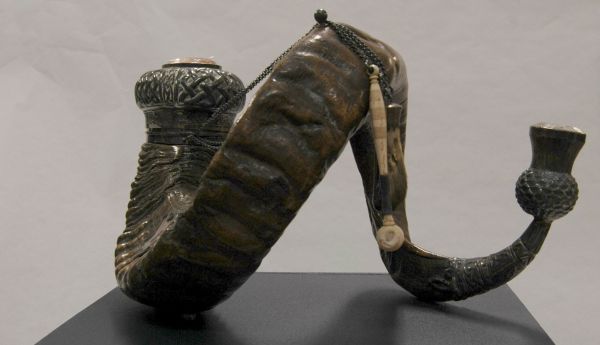- Tags
- Creation
-
- Current Holder(s)
-
Holder (Definite): Department of Physiology, Anatomy and Genetics, University of Oxford
‘In 1885 Sherrington was presented with an opportunity for foreign travel – an addiction which he was only too happy to cultivate. His friend, the newly elected Professor of Pathology at Cambridge, C.S.Roy, had recently solved a problem of infection which was devastating the cattle in Argentina. As Sherrington wrote later, Roy ‘succeeded in devising a preventive innoculation which alleviated the mischief’. The next ‘mischief’ occurred in Spain in the form of Asiatic cholera, and a Spanish physician was claiming that he had produced a vaccine with which to combat it.
Sherrington was sceptical, however, that a vaccine had been successfully produced in Spain. Thus, with J. Graham Brown, also of Cambridge, Sherrington and Roy set off for the Peninsula. They moved about that land under the auspices of Cambridge University, the Royal Society of London and the Association for Research in Medicine! In spite of this, however, they were required to pay the commanding army general of the infected area his ‘cut’ before they could proceed to see cases beyond the quarantine barriers.
In Toledo an angry mob set upon the trio, and the intervention of the British Consul – a huge Scot who could curse loudly in Spanish – saved their lives. Paving stones were flying through the air by the time he arrived. On their return to England in the autumn, the three decided to send a gift to the Consul and chose a handsome ram’s horn into which a snuff-box had been fitted. Alas, the gift was entrusted to C.S.Roy for forwarding. His fatal illness intervened so that the gift never went on its way to Toledo.’
From Sherrington. His Life and Thought by J. C. Eccles and W. C. Gibson
Donated by Professor William C. Gibson, Woodward Biomedical Library, University of British Columbia.
- No links match your filters. Clear Filters
-
Currently held by
 Department of Physiology, Anatomy and Genetics, University of Oxford
Department of Physiology, Anatomy and Genetics, University of Oxford
Physiological Laboratory, Sherrington Building, University of Oxford










